The Benefits of Investing Early to Retire Well
People in their 20s and 30s think of retirement as a far-off possibility, but as retirement gets closer, you begin to worry about your financial planning. Have you put aside enough money to retire safely, or will you need to take on a part-time job to make up for your missing income? Will your investments go south if the market does not perform optimally? These fears can make the thought of retiring stressful, but with proper planning and budgeting, you can retire well—with confidence.
While inflation and unexpected costs can cause uncertainty for your financial stability, solid investments can keep you afloat during tough economic times. Follow these tips to build a comfortable nest egg throughout your working years and make your retirement dream a reality.
How Much Is Enough For Your Retirement Fund?
Knowing when to start saving—and how much—starts with determining how much money you’ll need for retirement. A good rule of thumb for maintaining your current lifestyle in retirement is to multiply 80 percent of your salary times each year you will be retired. (Obviously, your salary may change over time, especially if you’re in the early stages of your career. If that’s the case, you may want to start with a salary that represents realistic career goals.)
If you make $100,000 per year at your job, calculate your required savings by multiplying $80,000 (80 percent of your salary) times 30 (the estimated number of years of retirement). That’s $2.4 million!
While this prospect may seem daunting for someone just starting out, remember to take your net worth into account. That means adding up the value of all assets, including real estate, and subtracting any liabilities like credit card debt or personal loans. Once you know your net worth, you can see how much you will need to contribute from a retirement fund to maintain your lifestyle.
Saving More Early to Spend More Later
Those approaching retirement in the 2010s realize that retirement costs much more than it did for their parents’ generation. Why? First, people live longer on average than in the past. Advances in medicine have made it possible to live in retirement for more than 30 years.
The generation that retires now is also more active than previous groups. Instead of slowing down, retirees use these vibrant years to travel, start new hobbies, or follow other interests, all of which require financial resources. This increased activity means spending much more on retirement than previous generations.
Investing early in retirement goals pays off in the long run. Being able to afford 30 years of active retirement is a huge benefit of early investing. And regardless of whether you’re in your 20s, 30s, 40s, or even 50s before you start saving, one thing remains true—the sooner you start, the better.
Gaining Financial Flexibility to Pursue Every Interest
Once you know you are able to retire early, the next step is deciding what you want to do with all your free time. Would you like to visit other countries and travel with friends or family? Or does the prospect of a new hobby excite you?
By investing early, you free yourself from the need to budget every penny. Make plans to travel for a few months, consider going back to school, or join the nearby country club to get in more time at the golf course. With a cushioned retirement fund, you can make plans for whatever activities you want to make the most of these decades without fear of emptying your bank account.
Starting Early to Multiply Your Money
Investing early for retirement allows you to enjoy the “miracle of compound interest.” What does this really mean? If you only put $1,000 in your account when you turned 25 and earned 5% interest every year, you would have $1,050 after the first year. The next year would see a 5% return on $1,050 instead of the flat $1,000, resulting in $1,102.50 after two years.
If your retirement fund continues with a 5% return, you will double your original amount in less than 15 years. It may seem like a “miracle,” but it’s hard math.
Although you cannot guarantee a set rate of return, compounding interest is a great benefit of early investing in retirement. Put simply, the earlier you start saving for retirement, the more money you will end up with—to an exponential degree—and the less capital you’ll need to put into your savings. Each year of early investment brings you closer to retiring on your terms, and puts you ahead of most of your peers.
Getting Access to Higher Risk, Higher Reward Investments
Early investing lets you be more creative in your portfolio. Instead of sticking with safer, low-return investments, picking higher risk investments can pay off in the long run. If people don’t start saving for retirement in their 30s or 40s, they cannot afford to run this risk. By investing early, you can pursue investment opportunities that represent a greater gamble but also a bigger return. This strategy allows many older adults to retire earlier or with a larger-than-expected financial cushion.
Remember that even after retirement, you need to continue monitoring your nest egg yearly to ensure your investments will still last the rest of your life. Sometimes, reinvesting some of your savings may help make your money last. Review your investments every year to rest easy and know whether you can retire early.
If you have invested early, your retirement may be just around the bend. If you haven’t, sooner is always better. Start planning today to enjoy the 20–30 years that follow your working life. You can enjoy your golden years worry-free, whether that means taking long vacations in far-off places or furthering your education. No matter what activities you plan, retire comfortably knowing that your early investments have finally paid off.






